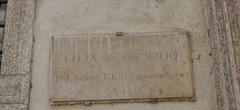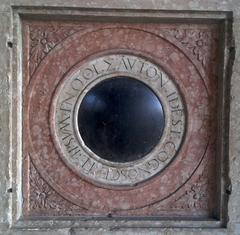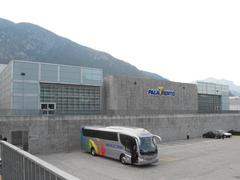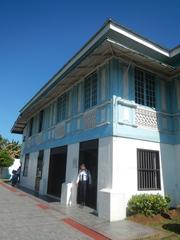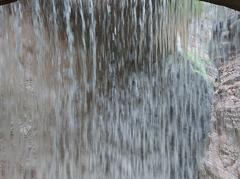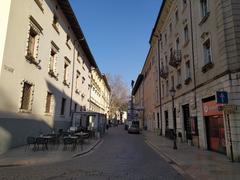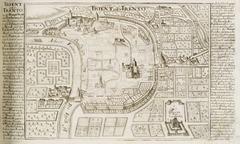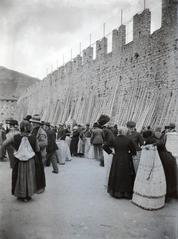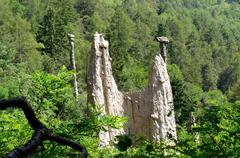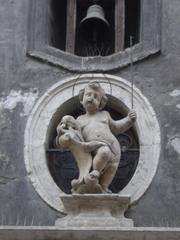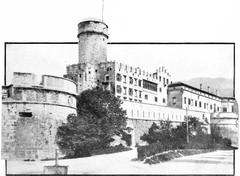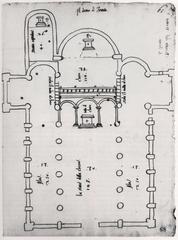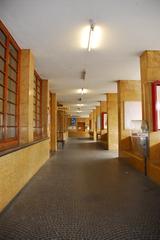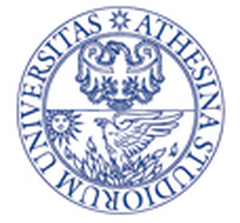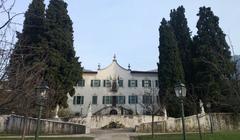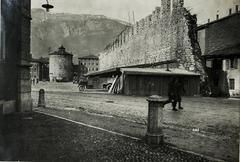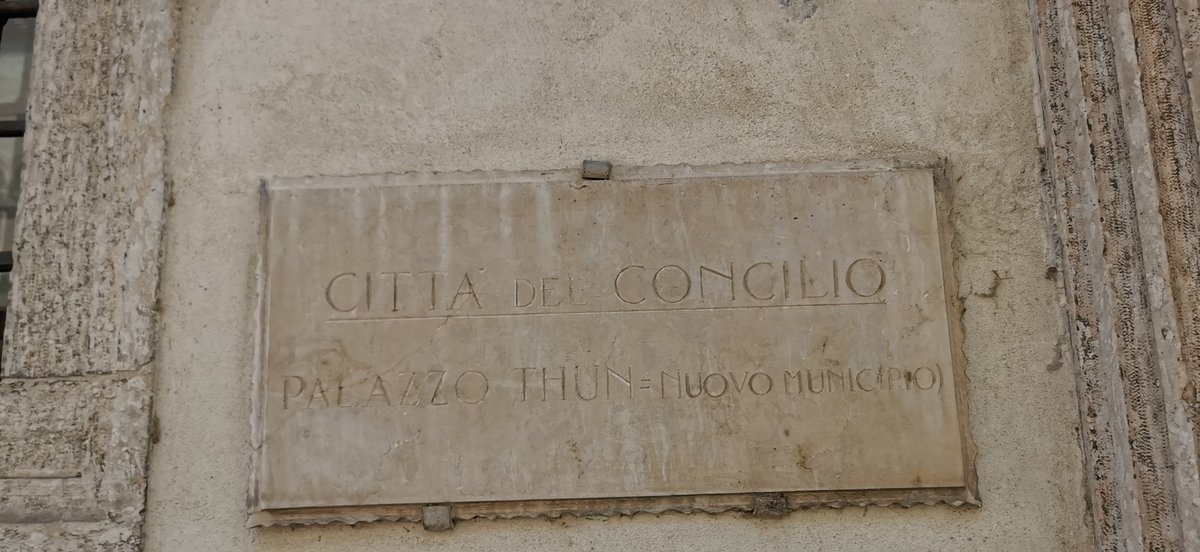
Visiting Palazzo Thun in Trento: Hours, Tickets, and Tips
Date: 31/07/2024
Why Visit Palazzo Thun in Trento?
Nestled in the heart of Trento, Italy, Palazzo Thun is a historical marvel that beckons visitors with its rich history and architectural grandeur. This 13th-century castle, originally constructed as a fortified residence for the influential Thun family, offers a fascinating glimpse into the past and stands as a testament to the cultural heritage of the region. The castle’s strategic location on a small hill near Vigo di Ton in the Val di Non valley provided both a defensive advantage and a commanding view of the surrounding area (Trentino.com). Palazzo Thun has undergone numerous modifications and expansions over the centuries, reflecting the changing architectural styles and needs of its inhabitants. The castle’s impressive blend of civil and military architecture, featuring a sophisticated defensive system with strong towers and solid walls, makes it a must-visit destination for history enthusiasts and tourists alike (Buonconsiglio.it). Whether exploring its venerable halls, enjoying a concert in its lush park, or delving into the legends that surround it, visitors to Palazzo Thun are sure to have a memorable and enriching experience.
What You’ll Learn in This Guide
- Introduction
- History and Significance
- Origins and Early History
- Architectural Evolution
- Cultural and Historical Significance
- Visitor Information
- Visiting Hours
- Ticket Prices
- Accessibility and Travel Tips
- Interior and Collections
- Role in the Council of Trent
- Modern-Day Significance
- Educational and Group Visits
- FAQ
- Conclusion
Explore Palazzo Thun: History, Tickets, Visiting Hours, and More in Trento
Introduction
Nestled in the heart of Trento, Italy, Palazzo Thun is a historical marvel that beckons visitors with its rich history and architectural grandeur. This castle, dating back to the 13th century, offers a fascinating glimpse into the past and stands as a testament to the cultural heritage of the region.
History and Significance
Origins and Early History
Palazzo Thun, located in the heart of Trento, Italy, is a historical gem that dates back to the 13th century. The castle was originally constructed as a fortified residence for the noble Thun family, who were influential feudal lords acting on behalf of the bishop. The Thun family played a significant role in the political and social landscape of the region, and their legacy is intricately woven into the fabric of Trento’s history. The castle’s strategic location on a small hill near the hamlet of Vigo di Ton in the Val di Non valley provided both a defensive advantage and a commanding view of the surrounding area (Trentino.com).
Architectural Evolution
Over the centuries, Palazzo Thun underwent numerous modifications and expansions, reflecting the changing architectural styles and needs of its inhabitants. The castle is an impressive blend of civil and military architecture, featuring a sophisticated defensive system with strong towers and solid walls. The entrance is marked by a drawbridge that leads to a stunning courtyard adorned with 18 stone pillars and two medieval towers. The oldest part of the castle is the fascinating palace that rises on the other side of the courtyard (Trentino.com).
Cultural and Historical Significance
Palazzo Thun holds immense cultural and historical value, not only for its architectural grandeur but also for its role in the region’s history. The castle served as the seat of the Thun family, who were prominent figures in the political and social spheres of Trento. The Thun family’s influence extended beyond the local region, as they were involved in various political and military affairs on behalf of the bishop. The castle’s rich history is also reflected in its numerous legends and myths, which add to its allure and mystique (Trentino.com).
Visitor Information
Visiting Hours
Palazzo Thun is generally open to visitors from Tuesday to Sunday. The castle is closed every Monday except holidays, as well as on December 25th and January 1st. Special openings are scheduled for certain holidays and every Monday in August. It is advisable to check the official website for the most up-to-date visiting hours (Buonconsiglio.it).
Ticket Prices
The admission fees for Palazzo Thun are structured to accommodate various visitor groups. The full price ticket is €8.00, with reductions available for youths (aged 15-26) at €5.00 and seniors (over 65) at €6.00. Family tickets are also available, with one adult and children under 18 priced at €8.00, and two adults with children under 18 priced at €16.00. Additionally, the Museum Pass offers access to multiple sites in Trento, Rovereto, and the surrounding area for €22.00, valid for 48 hours and extendable to three months at no additional cost (Buonconsiglio.it).
Accessibility and Travel Tips
Visiting Palazzo Thun can pose challenges for individuals with mobility difficulties due to its stairs, steep slopes, and uneven terrain. However, efforts have been made to provide as much accessibility as possible, including a summer shuttle service that operates from Vigo di Ton square to the castle car park. For the best experience, visitors are advised to wear comfortable shoes and check the weather forecast in advance. Additionally, exploring nearby attractions such as Buonconsiglio Castle, Beseno Castle, and Stenico Castle can enrich the visit (Buonconsiglio.it).
Interior and Collections
The interior of Palazzo Thun is a treasure trove of historical artifacts and architectural marvels. The castle boasts precious furniture, a comprehensive library, venerable halls and rooms, a collection of arms, and numerous tiled stoves. These elements not only highlight the opulence of the Thun family but also provide a glimpse into the lifestyle and culture of the era. The castle’s rich green park is another notable feature, often used for organizing concerts and other cultural events (Trentino.com).
Role in the Council of Trent
One of the most significant events in Trento’s history is the Council of Trent (1545-1563), which played a pivotal role in the Catholic Reformation. While Palazzo Thun was not the primary venue for the council, the Thun family’s influence and proximity to the events underscore the castle’s historical importance. The council’s decisions had far-reaching implications for the Catholic Church and European politics, and the Thun family’s involvement in the region during this period adds another layer of historical significance to the castle (Besides the Obvious).
Modern-Day Significance
Today, Palazzo Thun is a popular tourist destination, attracting visitors from around the world who are eager to explore its rich history and architectural beauty. The castle is part of a network of historical sites in Trento, including Buonconsiglio Castle, Beseno Castle, Caldes Castle, and Stenico Castle. These sites collectively offer a comprehensive glimpse into the region’s history and cultural heritage (Buonconsiglio.it).
Educational and Group Visits
Palazzo Thun offers guided tours and educational services for classes and groups of students. The price per student for educational services is €3.00. The castle also provides activities for families at fixed hours, with a family price including entry set at €8.00. For holders of the Family Card and the Euregio Family Pass, reduced price tickets are available for parents accompanying one or more children under 18 (Buonconsiglio.it).
FAQ
What are the visiting hours for Palazzo Thun?
Palazzo Thun is generally open from Tuesday to Sunday, with special openings on certain holidays and every Monday in August. It is closed on December 25th and January 1st.
Are there guided tours available at Palazzo Thun?
Yes, Palazzo Thun offers guided tours and educational services for classes and groups of students.
What is the ticket price for Palazzo Thun?
The full price ticket is €8.00, with reductions for youths (15-26) at €5.00, seniors (over 65) at €6.00, and family tickets ranging from €8.00 to €16.00. The Museum Pass is available for €22.00.
Conclusion
Palazzo Thun stands as a testament to the rich history and cultural heritage of Trento. Its architectural splendor, historical significance, and the legacy of the Thun family make it a must-visit destination for history enthusiasts and tourists alike. Whether exploring its venerable halls, enjoying a concert in its lush park, or delving into the legends that surround it, visitors to Palazzo Thun are sure to have a memorable and enriching experience. Don’t forget to download our mobile app Audiala for more travel guides and updates, and follow us on social media for the latest news about historical sites around the world.
Architectural Features of Palazzo Thun
Historical Evolution and Architectural Significance
Palazzo Thun, located at Via Rodolfo Belenzani, 19 in Trento, Italy, is a prime example of the architectural evolution that has taken place over centuries. Originally owned by the Thun family since 1454, the palace has undergone significant transformations, particularly in the 1550s when it was annexed to other buildings and radically transformed (Comune di Trento). During the Council of Trento, the palace played a crucial role by housing several assemblies and hosting the Pope’s envoys, Cardinal Ercole Gonzaga and Cardinal Giovanni Morone. This historical context adds layers of significance to its architectural features.
Façade and Exterior Details
The façade of Palazzo Thun is a testament to its rich history. Overlooking the ancient Via Larga, it features traces of imitating ashlar decorations, a style that mimics finely cut stone blocks. The Thun family crest still adorns the corners of the façade and the portal’s keystone, serving as a reminder of its noble lineage (Comune di Trento). Parts of the façade continue to feature frescoes from times past, adding an artistic element to its architectural grandeur (EMA Round the World).
Courtyard and Interior Spaces
Upon entering Palazzo Thun, visitors are greeted by a beautiful courtyard, accessible at no additional cost. This courtyard is not just a space of aesthetic appeal but also a functional area that connects various parts of the building. The inner courtyards are paved with cobblestones, adding to the historical ambiance of the palace (Comune di Trento).
Exhibition Halls and Accessibility
Palazzo Thun houses several exhibition halls, including the Thun Hall, the cellars of Torre Mirana, and the Vantini Chapel. The Thun Hall is located on the ground floor with direct access from the courtyard, making it easily accessible. The cellars are in the basement and can be reached via an elevator, while the Vantini Chapel is accessible by a stairlift preceded by a 6 cm high step (Comune di Trento).
Architectural Renovations and Modern Additions
Key refurbishing works began in 1831 under the supervision of Brescia-based architect Rodolfo Vantini. These renovations were crucial in preserving the architectural integrity of the palace while adapting it to modern needs. In 1873, Palazzo Thun was purchased by the municipality of Trento and became the seat of the City Council. This transition marked another phase of architectural evolution, incorporating modern amenities while retaining its historical charm (Comune di Trento).
Notable Artifacts and Decorative Elements
One of the most notable artifacts housed in Palazzo Thun is the original statue of the Fountain of Neptune. The statue currently displayed in Piazza Duomo is a bronze copy, created to ensure longevity as bronze wears less quickly over time (EMA Round the World). Inside the palace, visitors can also find various paintings and chimneys that add to its historical and artistic value.
Visitor Information
Ticket Prices and Visiting Hours
Palazzo Thun is open to visitors from Monday to Friday, 9:00 AM to 6:00 PM, and on Saturdays from 9:00 AM to 1:00 PM. Tickets can be purchased at the entrance for €5 per adult, with discounts available for students, seniors, and groups (Comune di Trento).
Travel Tips
- Traveling to Trento: Trento is easily accessible by train from major cities like Verona and Venice. The train station is just a 15-minute walk from Palazzo Thun.
- Nearby Parking: Parking is available at nearby lots such as Piazza Fiera and Piazza Duomo, both within walking distance of Palazzo Thun.
- Best Time to Visit: The best time to visit is during the spring and fall when the weather is mild, and the city is less crowded.
Nearby Attractions
- Piazza Duomo: Just a short walk from Palazzo Thun, this vibrant square is home to the stunning Trento Cathedral and the Fountain of Neptune.
- Buonconsiglio Castle: A historic castle that offers panoramic views of the city and houses several museums.
- MUSE - Museo delle Scienze: A state-of-the-art science museum perfect for families and science enthusiasts.
Accessibility Features
Palazzo Thun is committed to being accessible to all visitors. Four parking lots for disabled individuals are located along Via Belenzani, about 90 meters away from the palace. The building has a second entrance in Via Manci, and accessible toilets are available on the ground floor. The front gate is 230 cm wide and always open, ensuring easy access. The elevator has an 89 cm wide door and dimensions of 135 cm x 149 cm, with controls 120 cm above floor level featuring tactile symbols. The stairlift measures 71 cm x 70 cm and has a maximum load capacity of 250 kg (Comune di Trento).
Guided Tours and Special Events
Every Wednesday in July 2024, visitors can take a guided tour of Palazzo Thun (Visit Trentino).
Conclusion
By following these tips, visitors can ensure a smooth and enjoyable experience at Palazzo Thun and make the most of their time in Trento. For more detailed information on planning your visit, explore the Trentino tourism website. Don’t forget to download the Trentino tourism app and follow on social media for more updates.
Conclusion
Palazzo Thun stands as a testament to the rich history and cultural heritage of Trento, Italy. Its architectural splendor, historical significance, and the legacy of the Thun family make it an invaluable resource for both locals and tourists. The castle’s interior, adorned with precious furniture, a comprehensive library, and a collection of arms, provides a glimpse into the opulent lifestyle and culture of the past (Trentino.com). Today, Palazzo Thun continues to attract visitors from around the world, offering educational services, guided tours, and a variety of cultural events. Its role in significant historical events, such as the Council of Trent, adds to its allure and prestige (Besides the Obvious). By visiting Palazzo Thun, one not only explores a historical monument but also delves into the rich tapestry of Trento’s past. Don’t forget to download our mobile app Audiala for more travel guides and updates, and follow us on social media for the latest news about historical sites around the world.
References
- Trentino.com. Explore Palazzo Thun: History, Tickets, Visiting Hours, and More in Trento (Trentino.com).
- Buonconsiglio.it. Plan Your Visit (Buonconsiglio.it).
- Besides the Obvious. Discover Trento: A Complete Travel Guide (Besides the Obvious).
- Comune di Trento. Palazzo Thun (Comune di Trento).
- EMA Round the World. Trento Italy Travel Guide (EMA Round the World).
- Visit Trentino. We Look Forward to Seeing You at Palazzo Thun Guided Tour ([Visit Trentino](https
